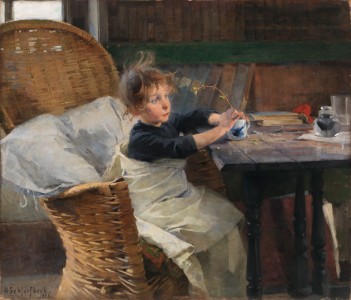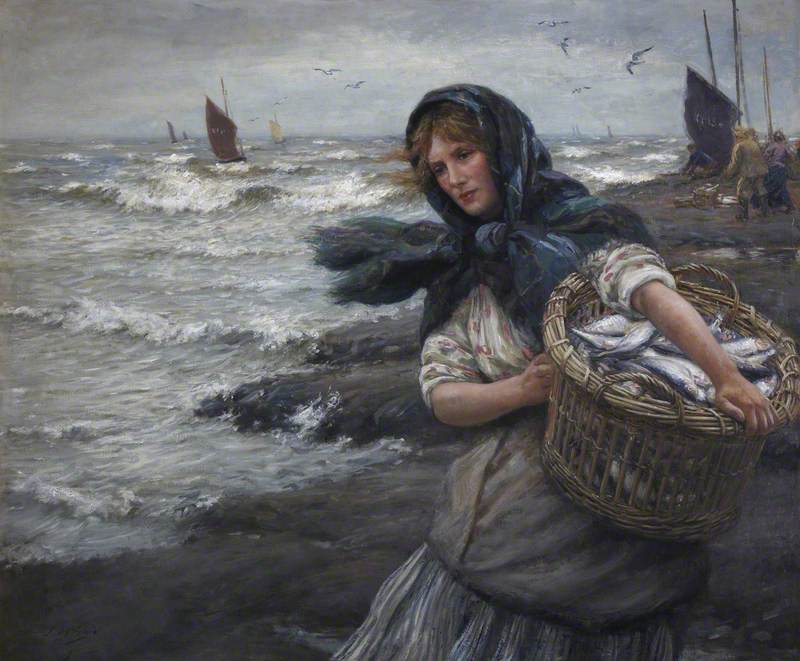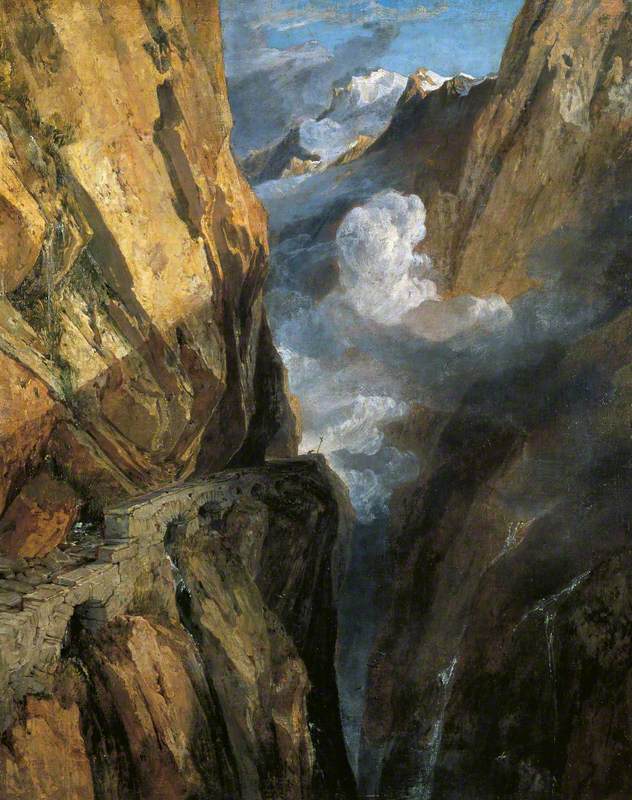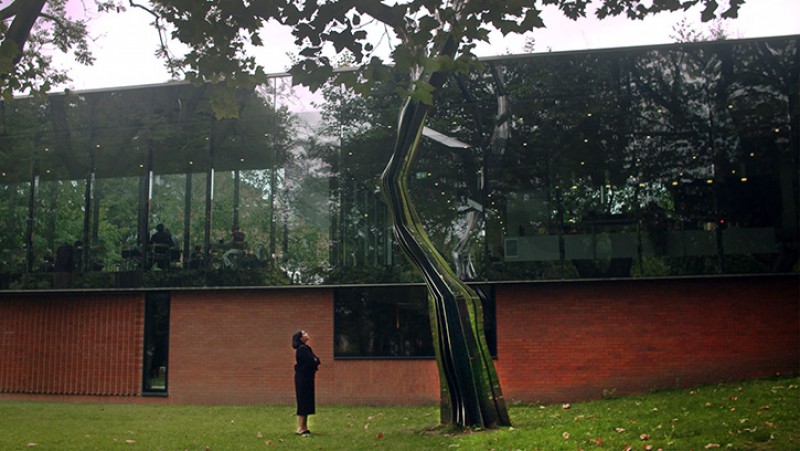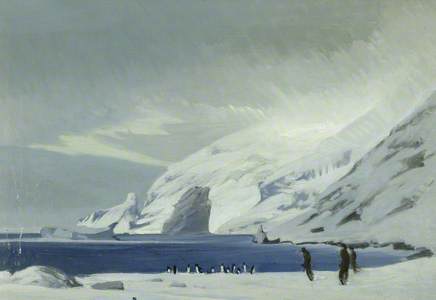The Scott Polar Research Institute, part of the University of Cambridge, was founded in 1920 as a national memorial to Captain Robert Falcon Scott and his four companions, who died on their return march from the South Pole in 1912.
Today, the Institute is renowned as a centre of excellence in polar research, but also houses the Polar Museum, a finalist in the 2011 Art Fund Prize competition for Museum of the Year.
The oil paintings catalogued by Art UK include some fine portraits; as might be expected, the most famous British Antarctic explorers, Scott and Shackleton, are represented.
William Edward Parry (1790–1855)
Thomas Phillips (1770–1845) 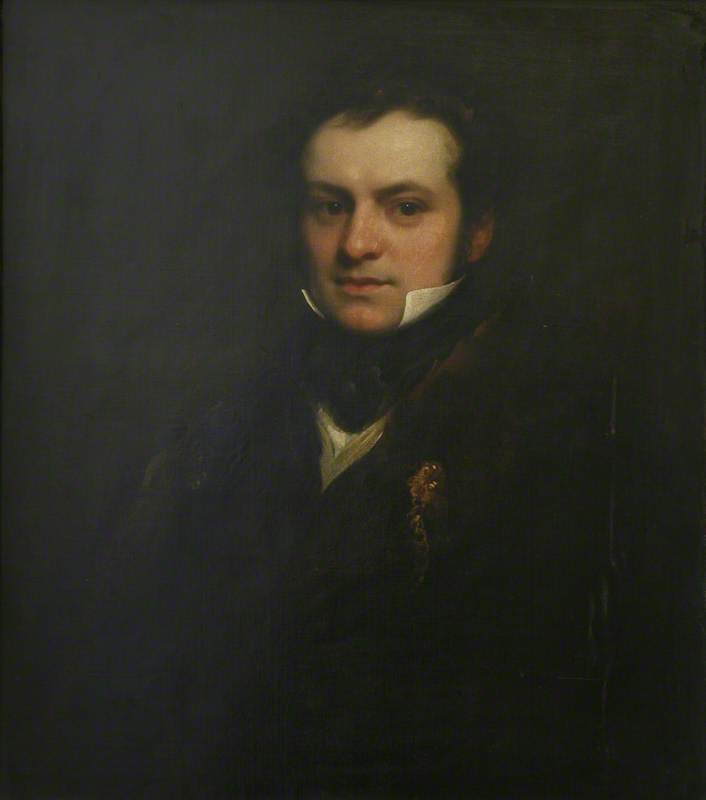
James Clark Ross (1800–1862)
c.1847–1848
Henry William Pickersgill (1782–1875) 
The collection also includes many well-known figures from nineteenth century Arctic exploration, such as William Edward Parry, James Clark Ross, Sir John Franklin and Admiral Sir Francis Leopold McClintock.
Francis Leopold McClintock (1819–1907)
John Lewis Reilly (1835–1922) 
Works by George Marston depict Shackleton's ill-fated Imperial Trans-Antarctic Expedition, 1914–1917.
Looking East from Lookout Point, Men and Penguins, Elephant Island, 1916
1917
George E. Marston (1882–1940) 
These were painted after the return to England, as Marston's oil paints were famously confiscated by Shackleton to help caulk the seams of the lifeboat. This small boat, the James Caird, was used to effect the rescue of the crew stranded on Elephant Island in the Southern Ocean after the expedition ship Endurance was crushed in the pack ice.
Also of note are 19 paintings by Roger Pocock, artist on the Oxford University Expedition to Spitsbergen in 1921.
Spitsbergen, Wood Bay, West Shore Porphyrite Exposure
1921
Roger Pocock (1865–1941) 
An Arts and Humanities Research Council project enabled the Museum to catalogue and photograph its entire inventory of artworks from 2007 to 2008, and to make them accessible via the Institute's website. The Museum continues to expand its collection and holds regular exhibitions of the work of contemporary artists.
As display space within the Museum is limited, loans to other institutions also play an important part in ensuring that the collection is available to a wider audience. A bequest in 1994 brought two important canvases by Richard Brydges Beechey into the collection.
Antarctic Expedition: Escape from the Bergs, 1842
1863
Richard Brydges Beechey (1808–1895) 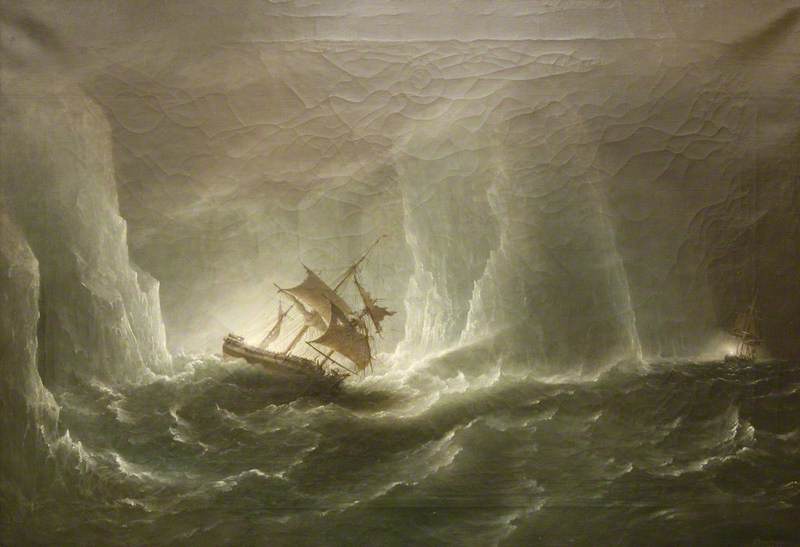
These paintings, recently conserved by the Hamilton Kerr Institute, show HMS Erebus and HMS Terror in the pack ice during James Clark Ross's 1839–1842 expedition to the Antarctic.
Antarctic Expedition: Gale in the Pack, 1842
1863
Richard Brydges Beechey (1808–1895) 
The Museum is reliant on charitable donations, gifts and sponsorship. We are indebted to the Friends of SPRI and other supporting bodies, including the Museums, Libraries and Archives Council/Victoria and Albert Purchase Grant Fund, who have enabled us to make acquisitions that we could otherwise not afford. We are also very grateful to our lenders, whose willingness to support the Institute makes many works available for research and for public enjoyment.
Heather Lane, Museum Development Consultant, Former Librarian & Keeper of Collections, Scott Polar Research Institute








